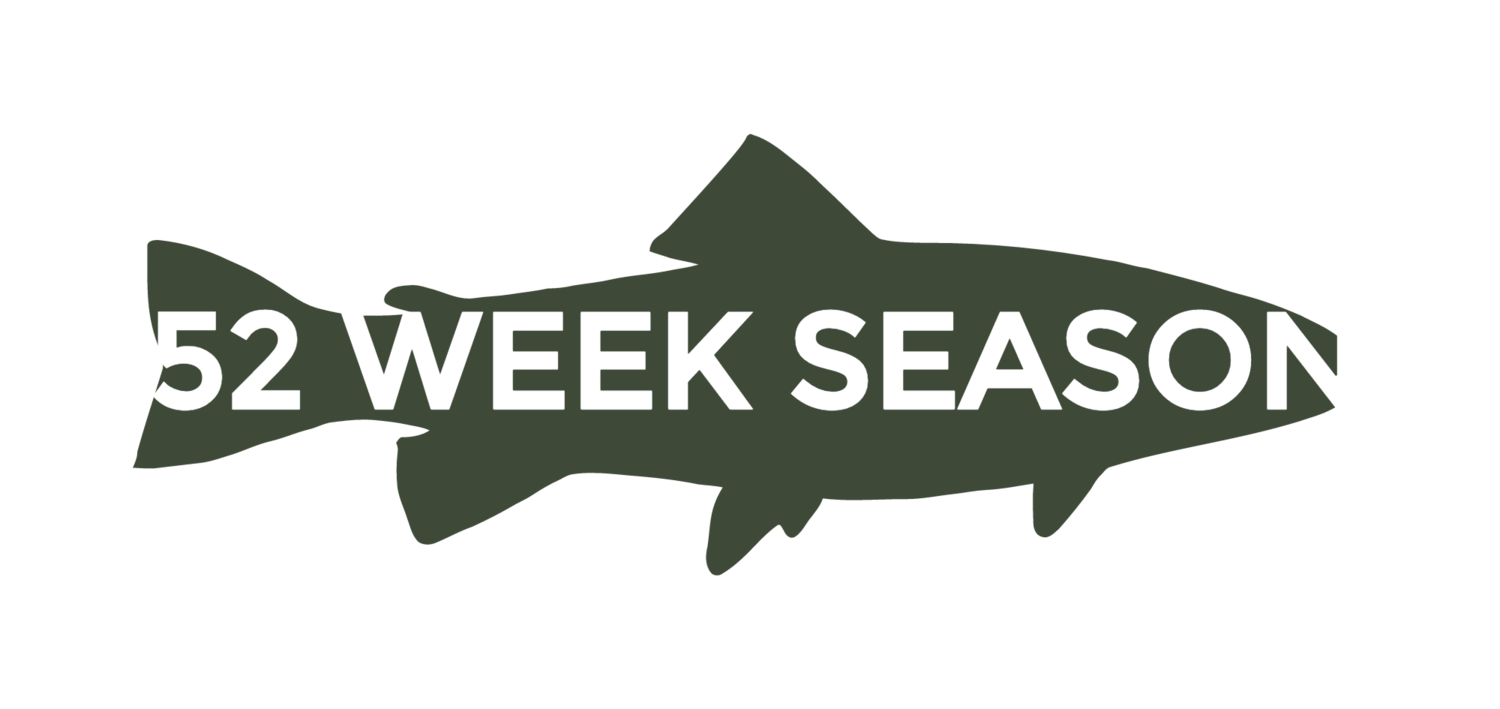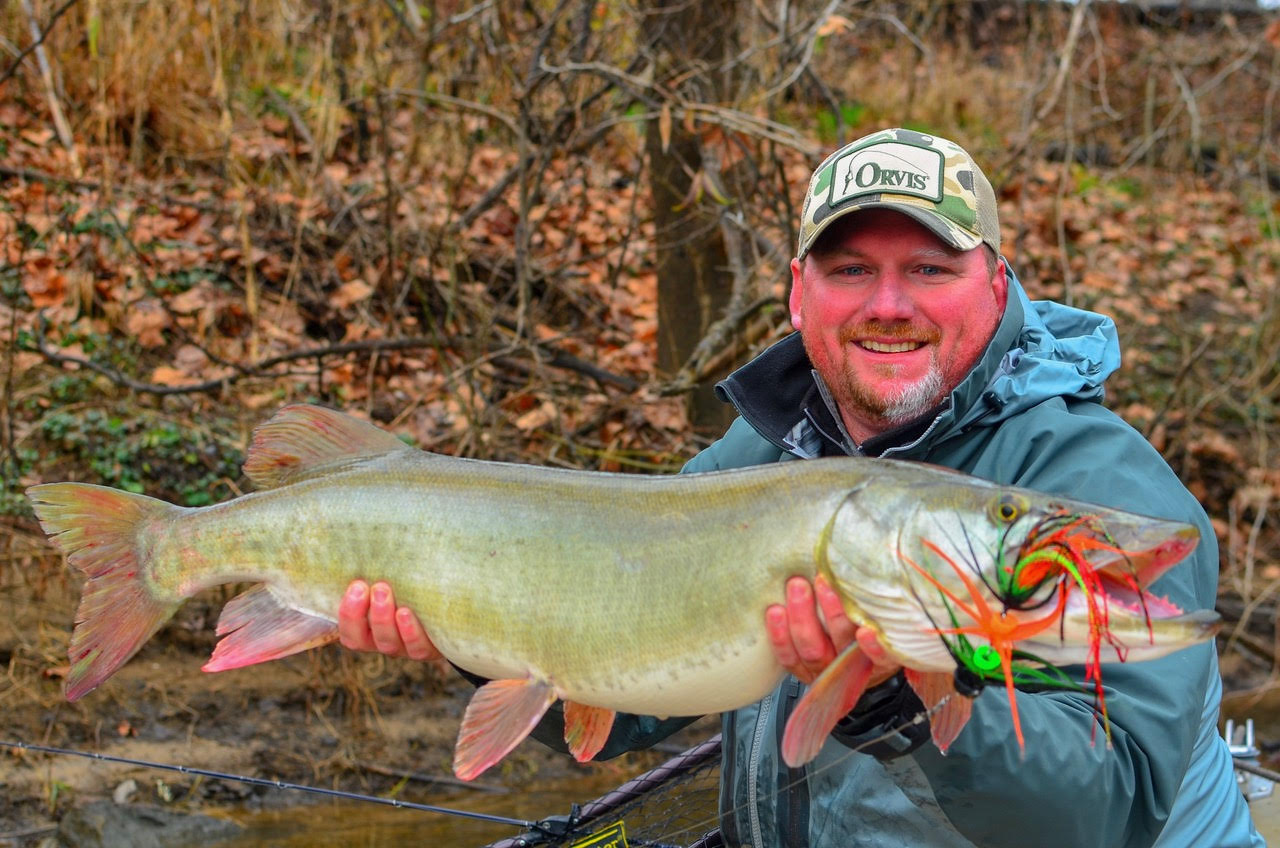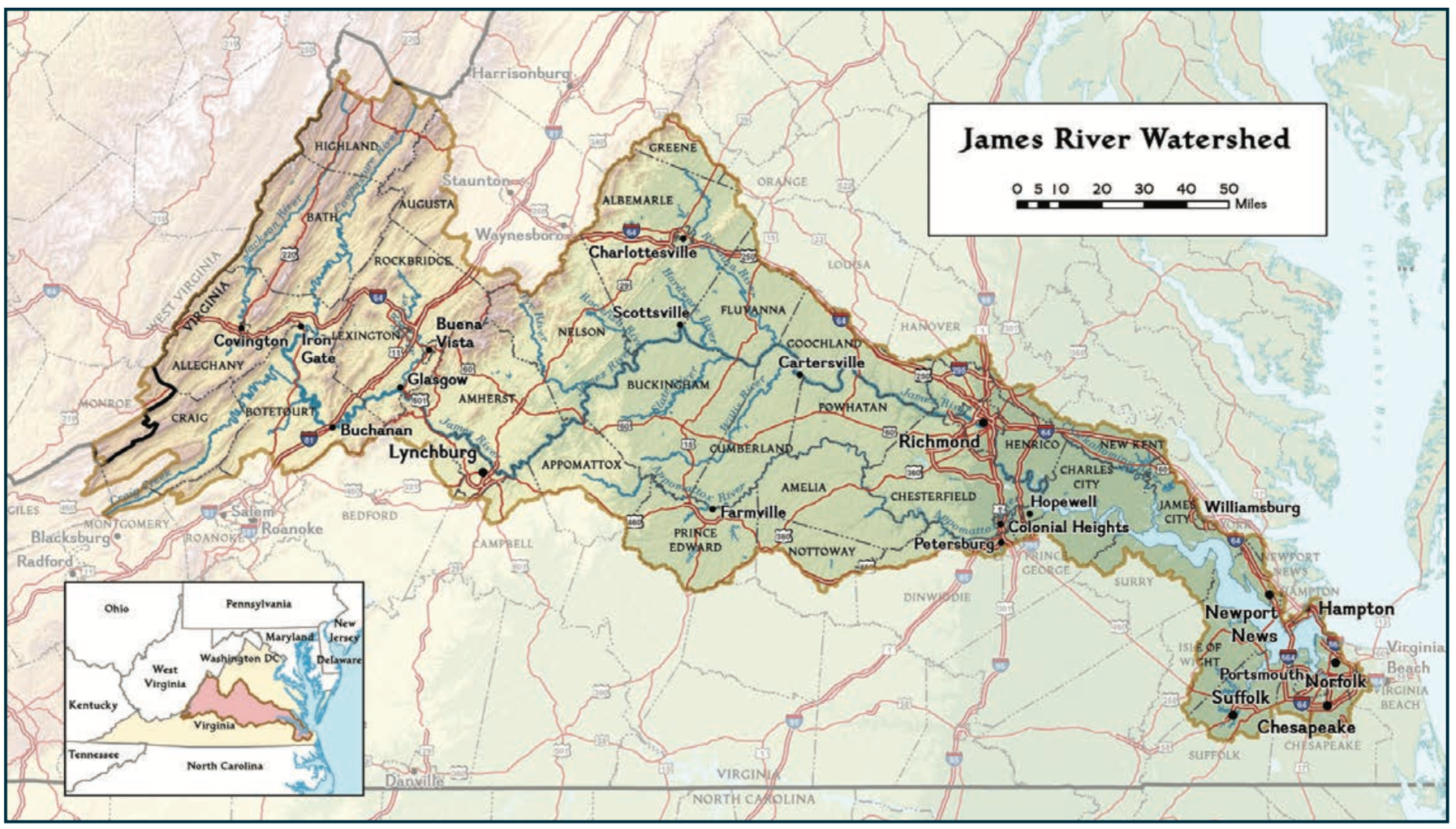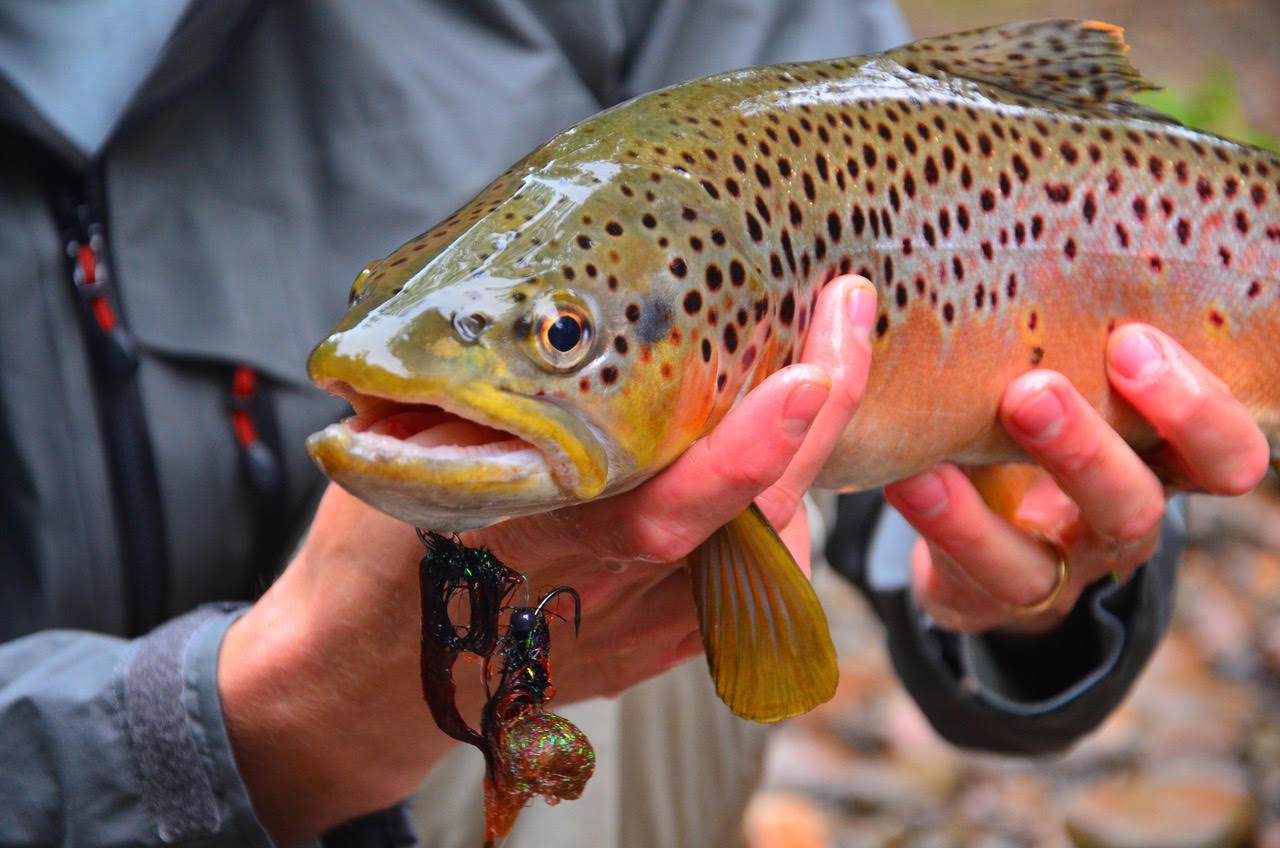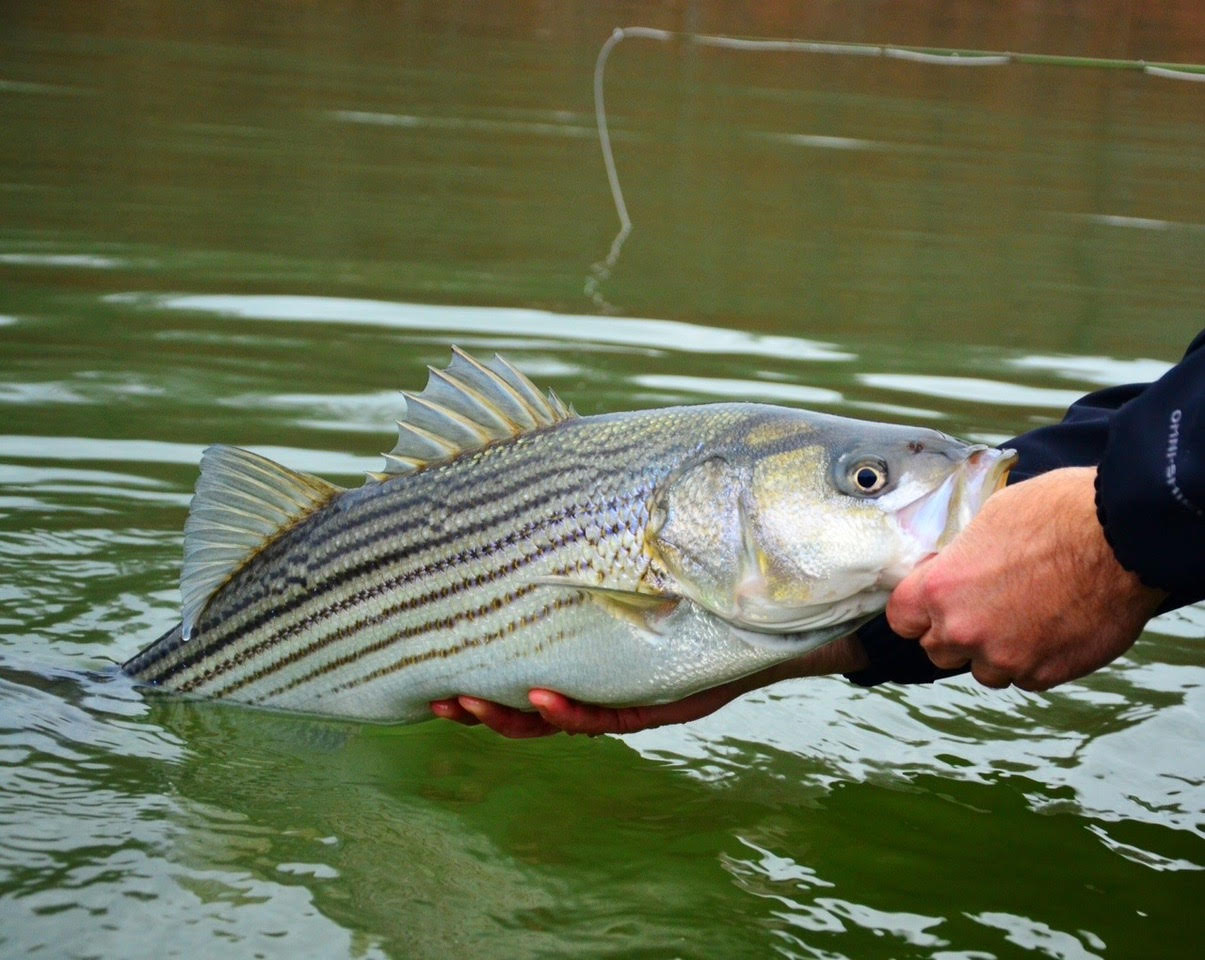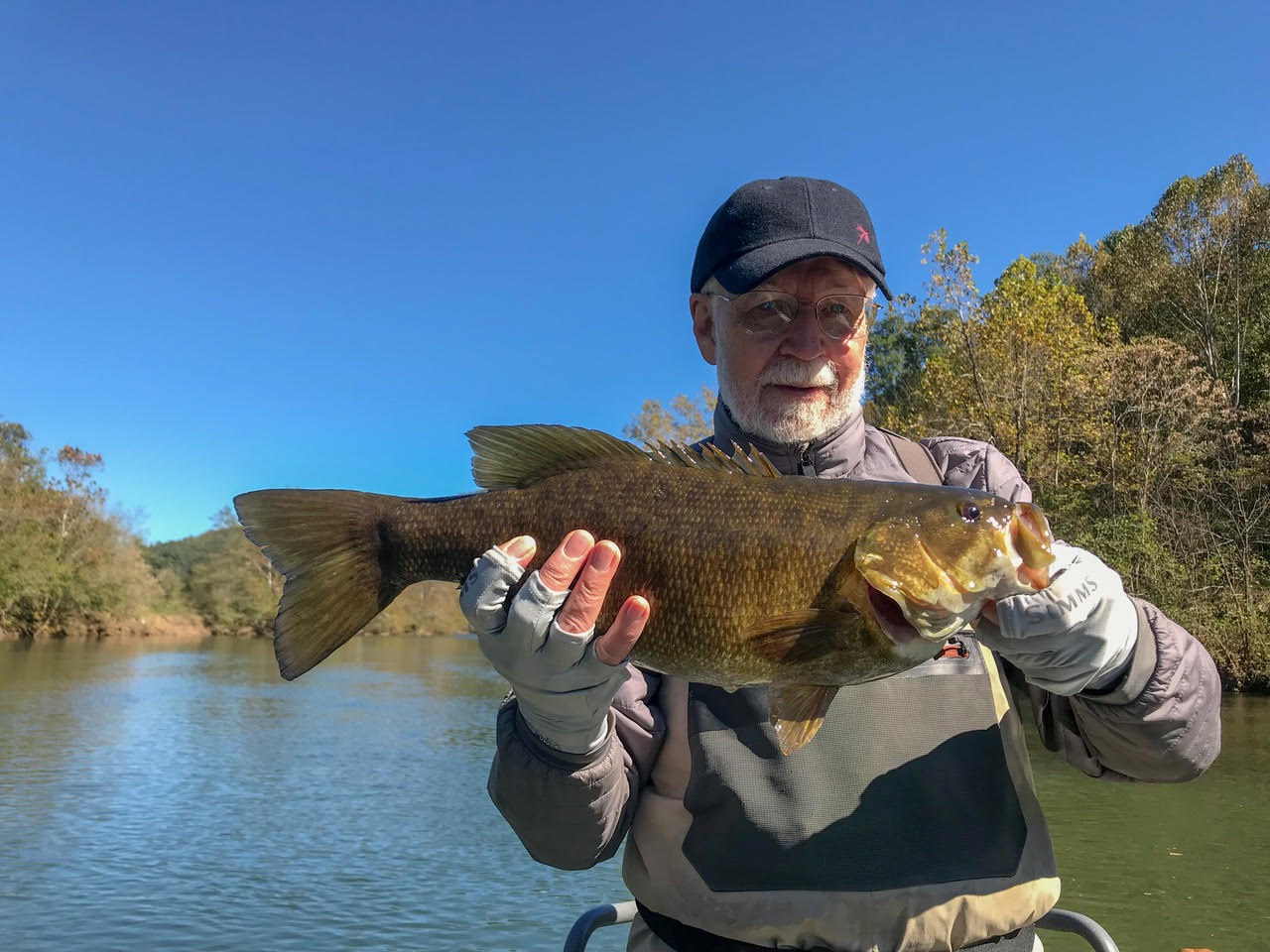Matt Miles: Virginia Musky Hunter
Virginia fishing might be best known for brookies, smallies, and rockfish, but what do you do when those fish are down for the winter and the water is barely above freezing? You target musky – or, as musky anglers would say, you go musky hunting.
““Muskie can be so hard to understand. It’s not the color of the fly, it’s not the type of fly — it’s all about being in the right place at the right time.””
These are some of the toughest fish to fish to catch in Virginia and perhaps the most rewarding. They’re more than likely to ignore you’re fly, or even worse, stalk it and not strike. The best chance at catching them is during the bleakest months of winter when most anglers are home tying flies. But when they hit, these ambush predators will explode on a foot-long fly and fold an 11-weight rod. It’s that elusiveness punctuated by random acts of aggression that keep people hooked.
The only way to get dialed in on musky is to put in your time, but I took a short cut and talked recently with Matt Miles. He is a native of Virginia who cut in teeth in Colorado before returning to Lynchburg in 2003 to guide his home waters. He targets Virginia’s top fisheries — spring and fall hatches for trout, rockfish during the spring runs, and smallies in the high summer — but musky sustain him through the winter and he’s surely logged the “10,000 casts.”
I caught up with Matt in mid-December as the temps were cooling down and musky season was setting in. My questions are in bold below, followed by his answers.
Musky seem like a great cure for the winter fishing doldrums. When do you mostly target them?
I fish for musky primarily in cold months, from about October through mid-March.
I tell people you should fish for musky between 42-72 degrees. I always tell people that above 72 degrees you should not fish for them because you're stressing them out and they could die regardless of if you let them go.
This time of year [in December], I like between 42-50. This time of year, if we have a good steady weather pattern, it can be really good. Not necessarily warm, but good and steady. Fishing before a front is always a good idea too. The day after a front is not even worth it.
I've had fish caught as cold as 38 degrees, but it's tough. If he's coming after that fly when it's 38, he's coming to eat and not check it out. They can also go 3-5 days without eating. Their metabolism is built to hold them over.
Why is winter the time to target musky?
When it's below 50, they've moved to their big wintering holes. You have more fish in a hole. I've seen VDGIF shock a hole, and 30 fish come out of the hole. The reason you want to fish for them that time of year, is that when they're stacked up in there, you have so many eyeballs. Chances are higher if you put the fly across more fish.
If you had to pick one month, when would you say in prime time?
The top month in my opinion is February. The pre-spawn fish are feeding more, and you have a better chance to catch a big female.
And then after that the fishing tapers off?
They spawn in the middle of March plus or minus depending on the weather, and when they're spawning I live them alone. When the water gets to about 50 and sustains, they'll start spawning. They can also stop if it drops down again.
Musky can already be hard to catch in general but get even harder when spawning. If you get them to eat during spawning, it's out of aggression.
If you do catch them in the spring, a lot of times they're cut up and bleeding. They have a wild mating ceremony. My buddy saw a female holding the male in its mouth like a T-bone. Another male came in and went after it like it was about to kick its butt!
May can be a great month for musky -- they're done with the spawn then. I'll sometimes do a combo with smallies.
That sounds like an awesome combo trip. Where can you fish for both, and what are some of the best musky rivers?
The James is my home river, plus some of its tributaries. The James quit stocking them in 2009, and the natural reproduction is doing pretty well. I saw an 8" one the other day at the boat ramp, so they seem to be self-sustaining pretty well. You're talking about a fish of 40" of more that are wild fish in a river system, which is pretty amazing!
In the New River, they don't reproduce as well, and they do still stock there, but not in the James.
Our fish were brought here from the Ohio River Valley in the 1970s. It's funny how long it took for these to get popular. It used to be a very small group of diehard musky fishermen. Now I see tons of people.
They are famously aggressive fish, but also infamously tough to catch!
Musky can be so hard to understand. The more I fish for them, the less I know. It's not the color of the fly, it's not the type of fly -- it's all about being in the right place at the right time. I can put you in the right place, but I don't know if it's the right time.
What kinds of rig and flies do you typically use?
I use an 11-weight typically with a sinking line of about 400 grains -- lines that are going to sink these flies fast. In the winter it can vary. If they get lethargic, you need to get right in front of them. Flies can vary in color. Flies with orange are one of my go-to's. Natural colors with grey and white can be good, and pink works well in the winter too.
If you were going to fish with gear, you get these musky rods that rarely flex. They chuck these big 6 oz. lures. A lot of guys sling those things and they sound like a bowling ball hitting the water. You can cast those 100 feet. But a fly works better in long clear water -- it's got better action and has that life-like motion.
You mentioned that you’re guiding through all four seasons. What does the rest of the year look like for you?
Trout
For trout, we have two peak seasons: March through May, when we get a lot of our hatches, and October through November or early December.
I guide on the Jackson and Smith rivers, which are both tailwaters. For hatches, on the Jackson River tailwater, the caddis hatch from mid-April to late-April is the first prolific hatch. After that, you're getting various things -- drakes and sulphurs -- but more sporadic. For the smaller brook trout streams, you can get different hatches based on water temperatures.
Depending on how warm it is, definitely April and sometimes May is peak for insect hatches -- of course every river differs. Around the end of May, I'll quit guiding for trout. It starts getting warm and stresses the fish out more.
Fall is also a great time for trout. Usually we get October caddis hatches, and we can have some really great fishing. We'll get some BWOs and midges around the last week of October. You can catch many on a dry fly before it gets too cold.
Rockfish
In April, I guide for rockfish on Kerr Reservoir -- aka Buggs Island Lake. It's one of the two self-sustaining lakes in Virginia for rockfish and has a lot of fish in the 5-8 lb. range. It's on the Roanoke River -- a lot of people call it the Staunton. That run is done about the first week of May.
In May, I had to Weldon, NC, and fish Lake Gaston or the Roanoke Reservoir. The fish run here has a smaller average fish size, but the numbers are insane. It's not uncommon to have 50 a day. There are 100,000s in there. The hickory shad are in there thick in March too -- it's also a really good hickory shad fishery.
It's a crowded fishery. They have giant parking lot packed full of trailers. But once you get in the fishery, you won't mind. There are a lot of saltwater guides out of North Carolina that come up there, but as far as I know, I'm the only Virginia guide that comes down. April, they have a trophy season, and then starting May 1, it's catch and release. Mother's Day is the best fishing down there.
Smallmouth
For smallmouth, I start guiding around mid-May and will go to late October. My favorite three months are July, August, and September. At the peak of the heat, there is a ton of insect activity and on the surface -- cicadas, ants, beetles, and damsel flies can fall in the water. There a just a bunch of insects concentrated on the surface -- it's really a great time of year for the topwater flyrodder.
Are you targeting smallies almost exclusively on the topwater, or do you swing streamers or drag crawfish through deep pools?
In the summer, it's rare that the fish leave the banks and get into the deep pools. When it gets cool in the fall, I'll go back to streamers. But all of the rivers are different in terms of the structure the fish want to be on.
The New is beautiful but it's deep, and the fish are sitting real, real deep. For a flyrodder, that's gonna be more difficult.
The James is a shallower big river that warms quickly, and you can start popper fishing earlier. The James is such a good river -- it's the longest continuous river within the state, and there are smallies all the way down into the James. Up in the mountains, it has deeper pools and riffles, but as it gets into the piedmont, it's a lot shallower, which is a good thing for someone throwing a fly -- it's way easier to get fish.
Muskies are fun, but smallmouth may be my favorite. It’s pretty cool when a client can get them both on one trip!
